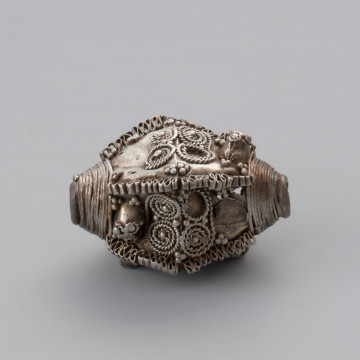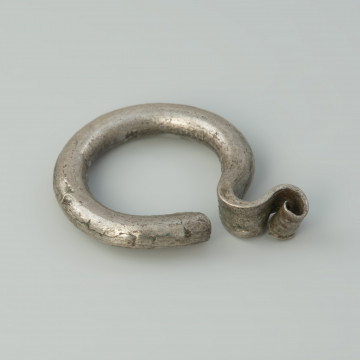
Silver bead
951 — 1000
National Museum in Szczecin
Part of the collection: Middle Ages
The fibula, discovered during the 1992 excavations in Szczecin’s Podzamcze in the 12th century culture layer, is made of a square bronze plate with four green square glass pieces, as well as four bronze rosettes resembling blooming roses. The fibulae, or brooches, are distinctive clothing accessories. In the early Middle Ages they were made of non-ferrous metals, such as tin, lead, silver, alloys of copper with various metals, as well as bronze. They were a sign of wealth, and thus signified belonging to particular social strata. They came in a variety of shapes. The most common, and thus the simplest ones, include round fibulae, with decorated border, or fibulae with no decoration at all. One of the unique finds is a fibula with a wrapped bronze border, filled with glass, discovered during excavations in Szczecin’s Podzamcze. A similar find, filled with antler, was found in one of the graves in the cemetery in Cedynia.
Ewa Górkiewicz-Bucka
Author / creator
Dimensions
cały obiekt: height: 2.6 cm, width: 2.6 cm
Object type
jewellery, pin (fastener), adornment
Technique
drilling, riveting, forging, cutting
Material
glass
Origin / acquisition method
legal transfer
Creation time / dating
Creation / finding place
Owner
Muzeum Narodowe w Szczecinie
Identification number
Location / status

951 — 1000
National Museum in Szczecin

966 — 1100
National Museum in Szczecin

1055 — 1100
National Museum in Szczecin
DISCOVER this TOPIC
Castle Museum in Łańcut
DISCOVER this PATH
Educational path